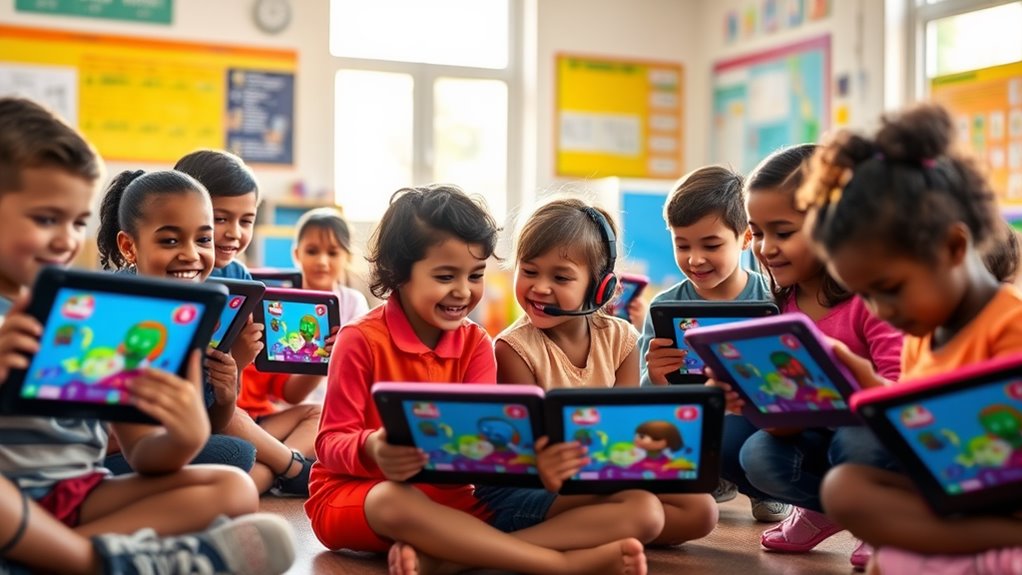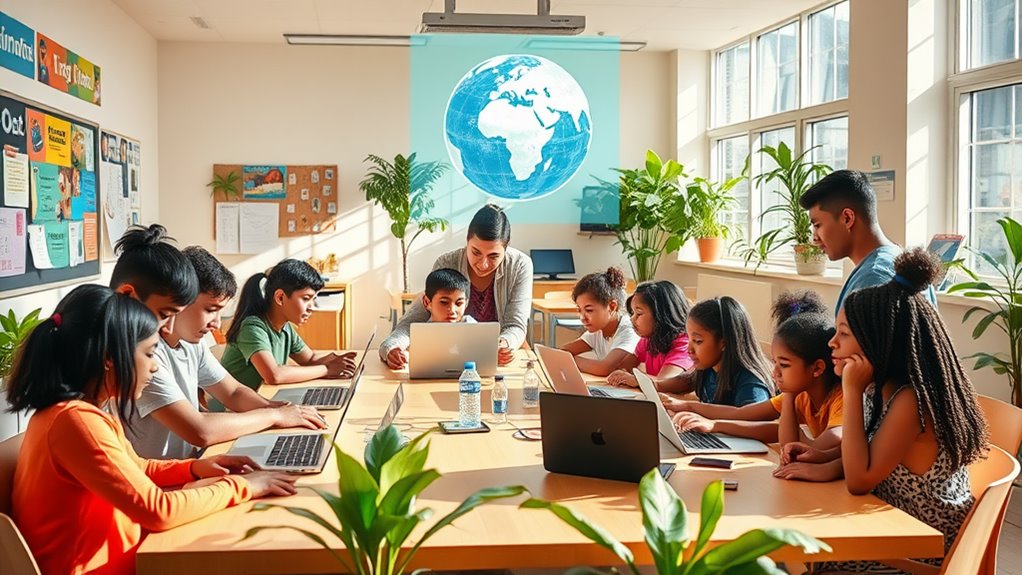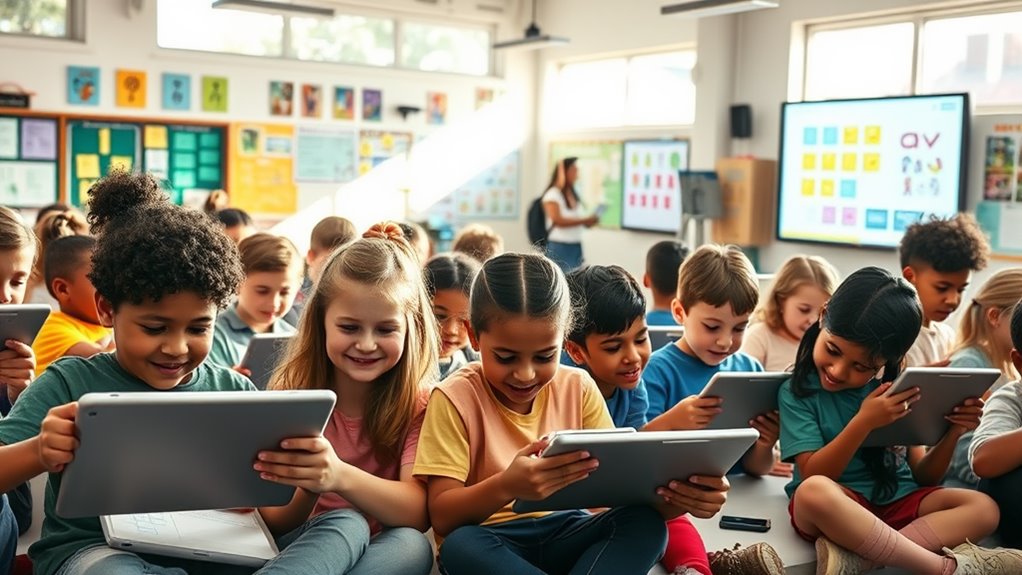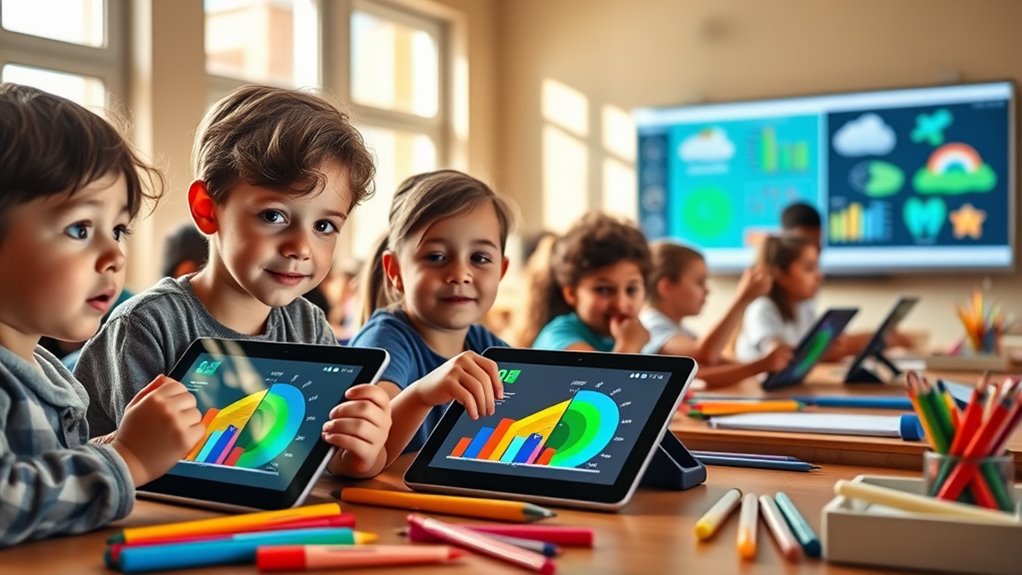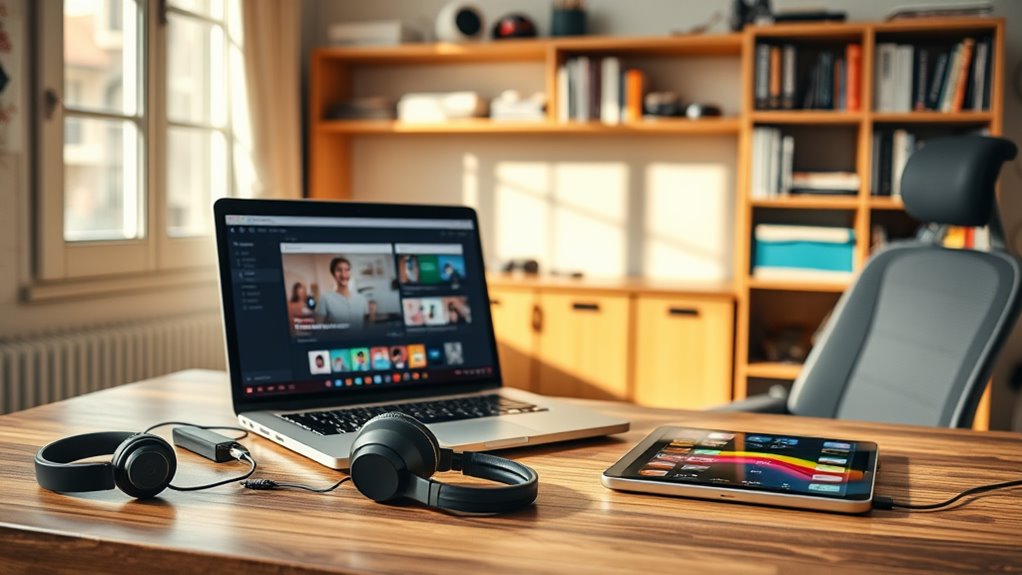How EdTech Is Revolutionizing Special Education!
EdTech is revolutionizing special education by tailoring learning experiences to meet individual needs. You’ll find adaptive platforms that assess skills and adjust content in real-time, fostering independence and motivation. Assistive technologies like text-to-speech software bridge learning gaps, enhancing accessibility for all students. Data-driven insights allow educators to monitor progress and adjust lesson plans for targeted support. Plus, collaborative tools enable seamless communication and creativity among students. By embracing these innovative tools, you can witness significant improvements in academic outcomes and student confidence. Stick around, and you’ll uncover more ways EdTech is making a difference!
Personalized Learning Experiences
In today’s world, personalized learning experiences are transforming special education for students with diverse needs. You’ll find that tailoring educational approaches to fit individual strengths and challenges is crucial. By leveraging data and insights, educators can create customized plans that address each student’s unique requirements, ensuring they can progress at their own pace.
You might be surprised at how adaptive learning platforms can assess a student’s skills and adjust content accordingly. This real-time feedback helps you and the teacher understand what works best for your child, allowing for timely interventions when needed. It’s about more than just adjusting the pace; it’s also about finding the right resources—like engaging materials that resonate with the student’s interests and learning styles.
Moreover, collaborative learning environments foster peer support and interaction, further enriching the educational experience. You’ll notice that when students feel valued and understood, their motivation and engagement soar. In this personalized approach, educators become facilitators, guiding students toward independence while ensuring that they receive the support necessary to thrive. Embracing personalized learning experiences can truly make a difference in the lives of students with diverse needs.
Assistive Technologies in Classrooms
Assistive technologies are revolutionizing classrooms by providing crucial support for students with special needs. You’ll find that these tools help bridge gaps, making learning more accessible and engaging. From speech-to-text software to specialized communication devices, assistive technologies cater to diverse learning requirements.
Here’s a quick overview of some common assistive technologies you might encounter in classrooms:
| Technology Type | Purpose |
|---|---|
| Text-to-Speech | Converts written text into spoken words |
| Speech Recognition | Allows students to dictate instead of typing |
| Augmentative Devices | Helps students communicate using symbols or pictures |
| Interactive Software | Engages students through gamified learning experiences |
Implementing these technologies not only enhances learning but also fosters independence among students. You’ll notice that when students can access tailored resources, their confidence grows, leading to better academic outcomes. As educators and parents embrace these tools, they create inclusive environments where every student can thrive. So, keep an eye out for assistive technologies that can transform your classroom experience today!
Enhancing Accessibility Features
When it comes to enhancing accessibility features, technology plays a pivotal role in ensuring that all students can fully engage with their learning environment. You’ll find various tools designed to meet diverse needs, making learning more inclusive. For instance, screen readers can help visually impaired students access digital content, while speech-to-text software allows those with writing difficulties to express their ideas effortlessly.
In addition, customizable interfaces let you tailor educational platforms to suit individual preferences. Students can adjust text size, contrast, or background colors to create a comfortable reading experience. Moreover, captioning and transcription services make audio and video materials accessible for students with hearing impairments.
Interactive applications often include features like gesture controls and simplified navigation, empowering students with motor challenges to participate more actively. With the rise of mobile devices, you can access these tools anytime, anywhere, further breaking down barriers to learning.
Data-Driven Insights for Educators
Technology not only enhances accessibility features but also provides educators with valuable data-driven insights to improve teaching strategies. By analyzing student performance data, you can identify trends and patterns that help you tailor your approaches. For instance, if you notice that a particular student struggles with specific concepts, you can adjust your lesson plans to provide targeted support.
Data analytics tools offer real-time feedback, allowing you to monitor student progress continuously. This insight enables you to make informed decisions about interventions and modifications, ensuring that each student receives the necessary support to thrive. Whether it’s through adaptive learning platforms or assessment tools, you’ll have access to actionable data that can transform your teaching methods.
Moreover, these insights foster a deeper understanding of individual learning styles and needs, promoting a more personalized educational experience. Collaborating with specialists and using data to guide your strategies can significantly enhance your effectiveness as an educator. Embracing this data-driven approach not only benefits your students but also empowers you to become a more effective advocate for their success in the classroom.
Collaborative Tools for Students
Empowering students to collaborate effectively, various tools are transforming how they interact and learn together. These tools promote communication, creativity, and teamwork, making learning more engaging for everyone, especially in special education. By leveraging technology, you can enhance your collaborative experiences.
Here’s a look at some popular collaborative tools:
| Tool | Features | Benefits |
|---|---|---|
| Google Docs | Real-time editing, comments | Easy collaboration, feedback |
| Padlet | Visual boards, multimedia | Creative expression, brainstorming |
| Flipgrid | Video discussions | Personal connection, peer feedback |
| Microsoft Teams | Chat, video calls, file sharing | Integrated communication, organization |
Using these tools, you can work on projects with classmates, share ideas, and support each other’s learning journeys. The flexibility of these platforms accommodates various learning styles and needs, ensuring everyone has a voice. With collaborative tools, you’re not just learning content; you’re building relationships and enhancing your social skills. Embrace these innovations, and watch your educational experience flourish!
Success Stories and Case Studies
Many educators and students have experienced remarkable improvements in learning outcomes thanks to the use of collaborative tools. These tools have not only enhanced classroom interactions but have also created a more inclusive environment for students with special needs. You might find it inspiring to hear about a few success stories:
- A classroom in California utilized speech recognition software, allowing a non-verbal student to communicate effectively with peers and teachers. This led to increased participation and confidence.
- In a New York school, educators implemented an interactive platform that allowed students with dyslexia to engage with texts through audio support. As a result, these students showed significant progress in reading comprehension.
- A district in Texas adopted a virtual reality program that helped students on the autism spectrum practice social skills in a controlled environment. Teachers reported noticeable improvements in their students’ ability to interact with others.
These case studies illustrate how EdTech can truly transform the educational landscape for students with special needs. By leveraging the right tools, you can create a more engaging and supportive learning environment that leads to success for every student.
Frequently Asked Questions
What Specific Disabilities Can Edtech Effectively Address in Special Education?
EdTech effectively addresses various disabilities, like dyslexia, ADHD, autism, and speech impairments. You’ll find tools that enhance learning experiences, improve communication, and foster independence, ensuring every student’s unique needs are met with tailored support.
How Can Parents Get Involved in Edtech for Special Education?
You can get involved by researching available edtech tools, joining parent support groups, attending workshops, and communicating with educators about your child’s needs. Actively participating helps ensure the technology used meets your child’s unique challenges.
Are There Any Concerns About Screen Time for Special Needs Students?
Yes, there’re concerns about screen time for special needs students. You should balance technology use with other activities, ensuring it doesn’t hinder social interactions or physical development. Monitor usage to promote healthy habits and engagement.
What Funding Options Are Available for Edtech in Special Education?
You can explore various funding options for EdTech, including federal grants, state programs, and private foundations. Additionally, consider partnerships with local businesses or crowdfunding to support innovative tools tailored to special education needs.
How Do Teachers Receive Training to Use Edtech Tools Effectively?
Teachers receive training through workshops, webinars, and online courses. They can also benefit from mentorship programs where experienced peers guide them. By actively engaging in these opportunities, you’ll effectively integrate EdTech tools into your teaching.

